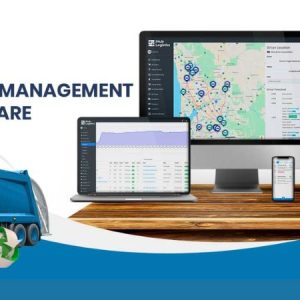With the increasing complexity of applications and rapid development, traditional approaches to AppSec struggle to keep up. Organizations can efficiently manage their application risk posture, collaborate effectively between development and security teams, and enforce application security policies and controls by adopting application security posture management (ASPM).
The adoption of ASPM is expected to rise significantly in the coming years as organizations seek to proactively identify and resolve application security issues. In fact, a recent Gartner study found that by 2026, over 40% of organizations developing proprietary applications will adopt ASPM.
ASPM introduces an asset-first approach that allows organizations to prioritize their most critical assets (repos, teams, endpoints, web servers, etc.) based on business importance, irrespective of security tooling data. This enables AppSec teams to allocate limited resources effectively and focus on vulnerabilities that have significant business impact rather than getting overwhelmed with a backlog.
ASPM typically involves collaboration between development, operations, and security teams (a form of DevSecOps.)
Why is ASPM important?
ASPM is gaining importance due to several factors:
-
Applications are becoming significantly more complex, especially at the enterprise level, which makes it more difficult to gain visibility into an application’s security posture.
-
Organizations employ various security tools that span responsibilities and teams and are managed in silos — this obscures visibility into risk and makes establishing connections and managing the associated data challenging.
-
Prioritizing vulnerability fixes is difficult for organizations because of the growing number and complexity of vulnerabilities that require holistic context. This necessitates a comprehensive perspective encompassing application and cloud security.
The rapid pace of development surpasses the capabilities of traditional application security methods, emphasizing the need for ASPM to keep up with the evolving landscape.
Security types comparison:
ASPM vs. traditional AppSec
Traditional AppSec practices involve testing applications for security issues at various development stages using different, often disconnected, security testing tools and methods. This approach often results in disjointed testing, leading to lengthy lists of security issues that include false positives, duplicates, and lack crucial context. It’s also possible for developers to ignore or bypass the alerts and lists of vulnerabilities coming from AppSec tools and their security teams, leading to challenges of enforcement and trust between developers and security teams.
Additionally, traditional application security workflows tend to be siloed and primarily prioritized by severity levels — which limits the effectiveness of identifying and addressing critical security vulnerabilities in a timely and efficient manner.
ASPM consistently enforces AppSec policies and controls by providing automated monitoring and enforcement mechanisms.
ASPM vs. ASOC
ASPM and ASOC (application security orchestration and correlation) are two distinct but related concepts in application security, ASOC evolved into ASPM, and remains a key feature of ASPM solutions.
ASOC is an approach to managing and automating application security processes. This approach orchestrates and automates:
-
security tasks,
-
the correlation of data from various sources,
-
threat intelligence integration,
-
robust reporting and analytics,
-
and workflow management.
ASOC enhances efficiency, collaboration, and visibility in application security practices, which helps organizations proactively identify and respond to security risks to improve their security posture and reduce the likelihood of breaches.
ASPM evolved out of ASOC, with the latter being one of the key capabilities in the former. ASOC tools were the first centralizing tools to bring vulnerabilities from application security tools together. ASPM tools bring the concept of ASOC a step forward, shifting from just managing vulnerabilities, to managing and scaling an AppSec program based on risk.
ASPM vs. CSPM
ASPM and cloud security posture management (CSPM) are both fundamental approaches to managing the security posture of modern organizations. ASPM helps organizations identify and remediate vulnerabilities in their applications. CSPM helps organizations identify and mitigate risks in their cloud infrastructure.
ASPM operates at the application layer, overseeing applications in both on-premises and cloud-based environments to detect and address potential security risks associated with these applications. ASPM focuses on managing the security posture of applications throughout their lifecycle.
CSPM visualizes the cloud services and identifies risks at the cloud infrastructure layer. CSPM solutions focus on monitoring and securing the cloud infrastructure itself. CSPM identifies misconfiguration issues and compliance risks in the cloud.
ASPM and supply chain security
ASPM is crucial in helping organizations implement software supply chain security controls. For example, providing a comprehensive SBOM (software bill of materials) of an organization’s application and software supply chain components. An SBOM strengthens the software supply chain security controls by providing valuable risk assessment insights and design-to-production context for all application and supply chain components, ensuring a robust and secure supply chain.
Leverage full platform ASPM from code to cloud with Snyk
At Snyk, we view ASPM as a solution to the growing list of existing and emerging challenges facing organizations trying to manage a developer-first application security approach.
If you ask us, we would say that there are four core pillars an ASPM solution should include:
-
AppSec orchestration: The ability to support the integration and operation of application security tools across the SDLC, enabling AppSec teams to define their company’s security posture with policies and guardrails while having visibility over the whole process.
-
Application-centric design: The ability to understand the whole process of how developers write, build, deploy, and run their applications in order to build a complete picture of the application and how developers are making decisions.
-
Risk and remediation management: Enable users to focus on the issues that pose the most risk to an application and the organization.
-
Release governance: Understanding the application and risk profile while considering the business context so developers stay secure as they move through the development lifecycle. ASPM solutions should enforce guardrails, leading to better upfront software decisions, which reduces the number of vulnerabilities introduced in the first place.
Snyk’s version of application security posture management (ASPM) aims to assist developers in making secure design decisions at every stage of the software development lifecycle. Snyk empowers developers to take ownership of application security by emphasizing risk management — not just vulnerability management. This collaboration between AppSec and developers ensures that applications are secure by design.
Are you ready to learn more about Snyk’s SAST, SCA, container, and IaC security features?
Or would you rather experience developer-first security’s impact on release velocity firsthand?
Either way, book a live demo with a security expert today to learn more and see Snyk in action!




